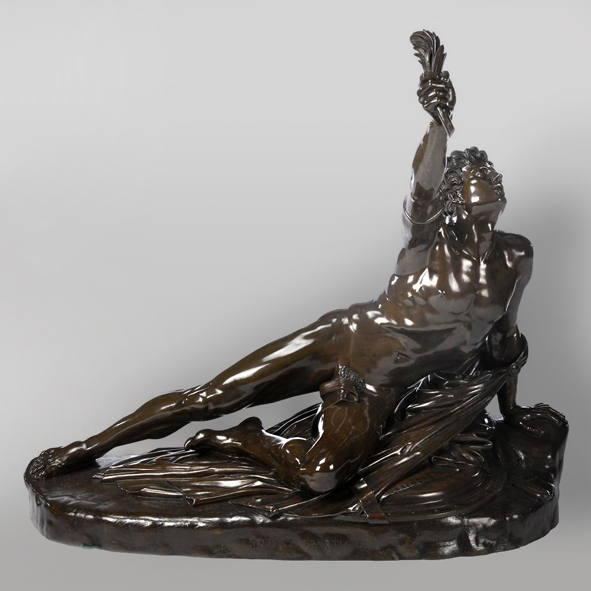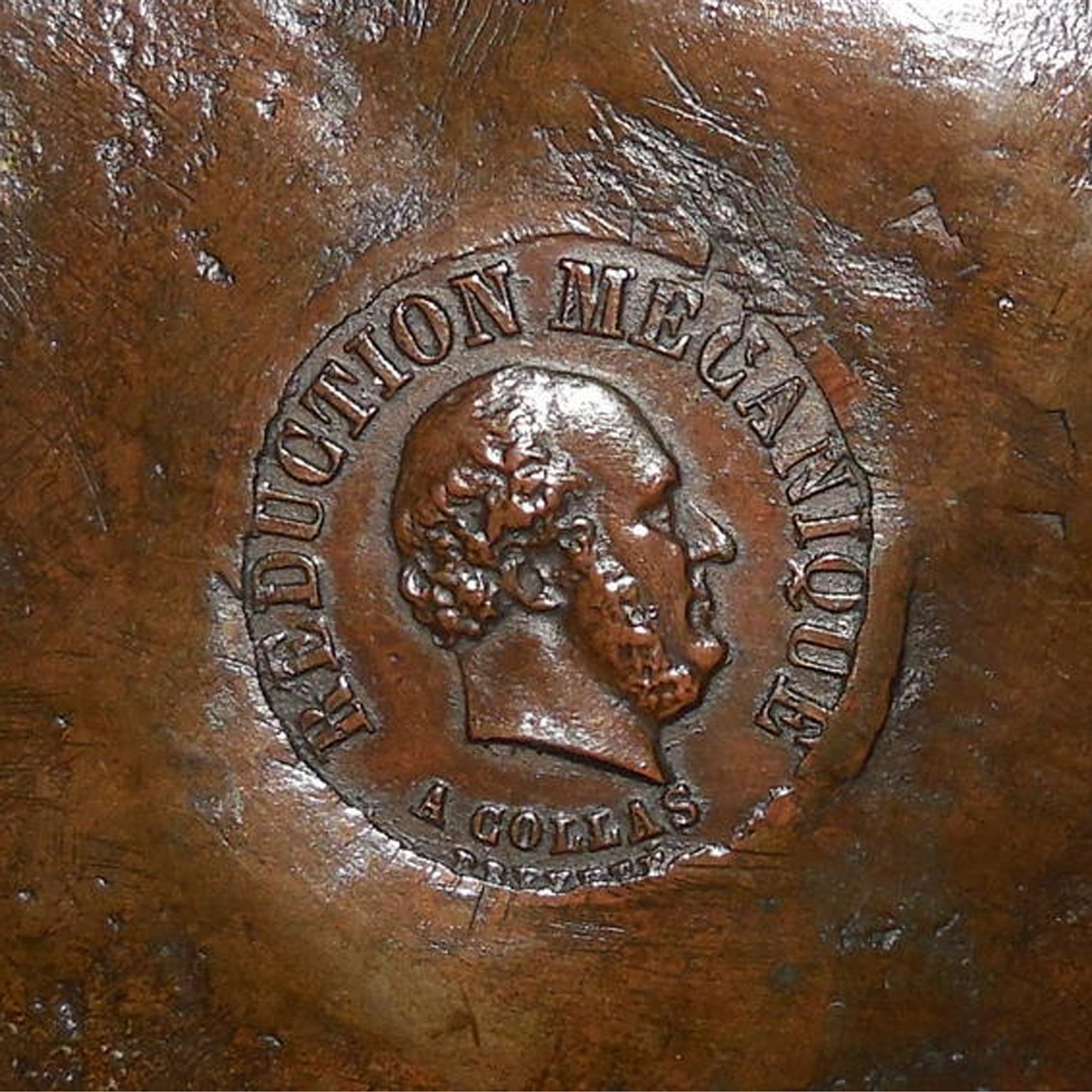Фердинанд Барбедиенн
'Солдат Марафона'
£30,000
'The Soldier of Marathon' - A Large Patinated Bronze Group After A Model by Jean-Pierre Cortot, Cast by Ferdinand Barbedienne. Jean-Pierre Cortot (d....
Размеры
Height: 96 cm (38 in)Width: 107 cm (43 in)
Глубина: 39 см (16 дюймов)
Описание
‘The Soldier of Marathon’ – A Large Patinated Bronze Group After A Model by Jean-Pierre Cortot, Cast by Ferdinand Barbedienne.
Jean-Pierre Cortot (d. 1843) studied at the Ecole des Beaux-Arts, Paris. After winning the Prix de Rome in 1809, he returned to Paris as a professor at the Ecole. Cortot exhibited the plaster model of this sculpture at the Salon in 1822. In 1831, Louis-Philippe, recently crowned, commissioned a marble version from Cortot which is now exhibited in the Louvre.
Barbedienne edited the model in four sizes, the present cast being an example of the largest.
Франция, около 1880 года.
Дата
Около 1880 года
Происхождение
Франция
Средний
Патинированная бронза
Подпись
Inscribed 'SOLDAT SPARTIATE' and 'F. BARBEDIENNE FOUNDEUR'.

Фердинанд Барбедиенн (6 августа 1810 - 21 марта 1892) - французский металлообработчик и промышленник, который был хорошо известен как создатель бронзовых изделий.
Сын мелкого фермера из Кальвадоса, он начал свою карьеру в качестве торговца обоями в Париже. В 1838 году он вступил в партнерство с Ахиллом Колласом (1795-1859), который только что изобрел машину для создания миниатюрных бронзовых копий статуй. Вместе они начали бизнес по продаже миниатюр античных статуй из музеев по всей Европе, тем самым демократизируя искусство и делая его более доступным для домашних хозяйств. С 1843 года они расширили сферу своей деятельности, воспроизводя работы живых художников, а также стали производить эмалированные предметы быта. С началом франко-прусской войны в 1870 году из-за нехватки металлов фирме пришлось ненадолго переключиться на изготовление пушек, но после этого она возобновила свою деятельность. После смерти Барбедьена в 1892 году он был похоронен на кладбище Пер-Лашез, а фирму продолжил его племянник Гюстав Леблан до 1952 года.
Среди основных художников, репродуцированных фирмой, были Антуан Луи Бари и Огюст Роден.











 Печать
Печать


